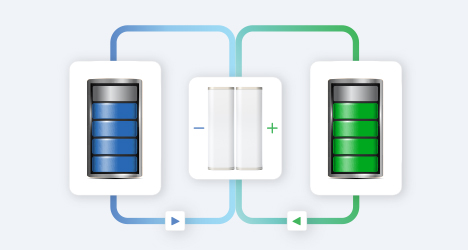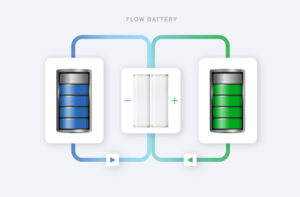Working with EPCs — End-to-End Renewable Energy Engineering Learn More
Long duration energy storage (LDES) could unlock full potential of solar and wind generation by enhancing grid reliability

Long duration energy storage, defined as any system that is able to discharge energy at its rated power output for 10 or more hours, holds the potential to stabilize grid reliability and supply, making solar and wind power generation a more viable option for large-scale adoption.
While they are important renewable energy sources, solar and wind generate power intermittently, often not aligning with peak energy demand. This adds to stress on grid supply, which is now facing even more challenges with extreme weather events that disrupt operations. LDES holds potential as a grid-stabilizing technology that could help during events such as freezing weather in Texas and wildfires in California that have led to blackouts in recent years.
LDES has been around for decades, primarily as pumped storage hydropower systems, but facing barriers such as cost, permitting, technology, and regulatory support, it has not achieved widescale adoption. However, Blymyer Engineers Senior Electrical Engineer Jak Kuehn says, “Newer battery technologies, including lithium ion, thermal, flow, and molten salt, could change the landscape for LDES.” Below is a summary of four types of LDES batteries and their strengths and drawbacks.
LDES battery types
Lithium-ion
Lithium ion, with an established supply chain and increasing cost competitiveness, is the currently dominant battery solution, used in both electric vehicles and stationery batteries. However, its application for LDES is uncertain. It also faces safety and sustainability issues, with high recycling costs and high battery prices due to limited lithium supply.
Thermal
Hot rock energy storage uses cheap and abundant natural materials, but converting heat back to electricity efficiently and cost-effectively remains a barrier.
Flow
Flow batteries produce power by pumping electrolytes from external tanks into a central stack. Their widespread use has been hampered by sensitivity to high temperature, high cost, and smaller storage capacity, but those issues are being worked on and new versions show promise.
Molten salt
New technologies using sodium-ion, magnesium-ion, and various hybrids are being developed. These batteries are highly efficient and relatively inexpensive, but have not reached the effectiveness of lithium-ion batteries yet.
Blymyer Engineers keeps up with advances in battery technology, engineering both pre-built and bespoke storage systems based on demand, environment, and power sources. Always looking to the future, we will continue to respond to changes in battery technology with systems designed to take full advantage of renewable energy production and storage.
